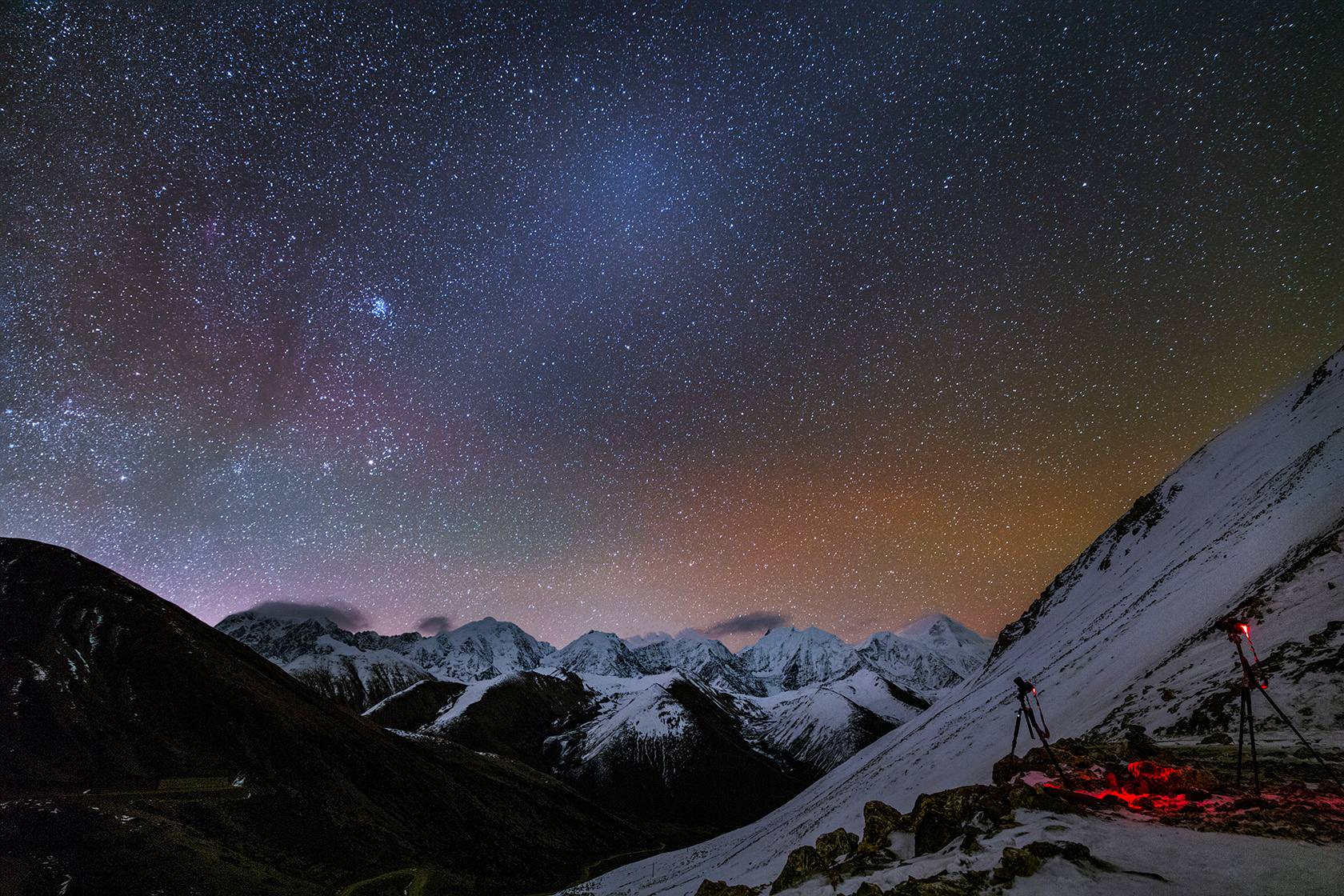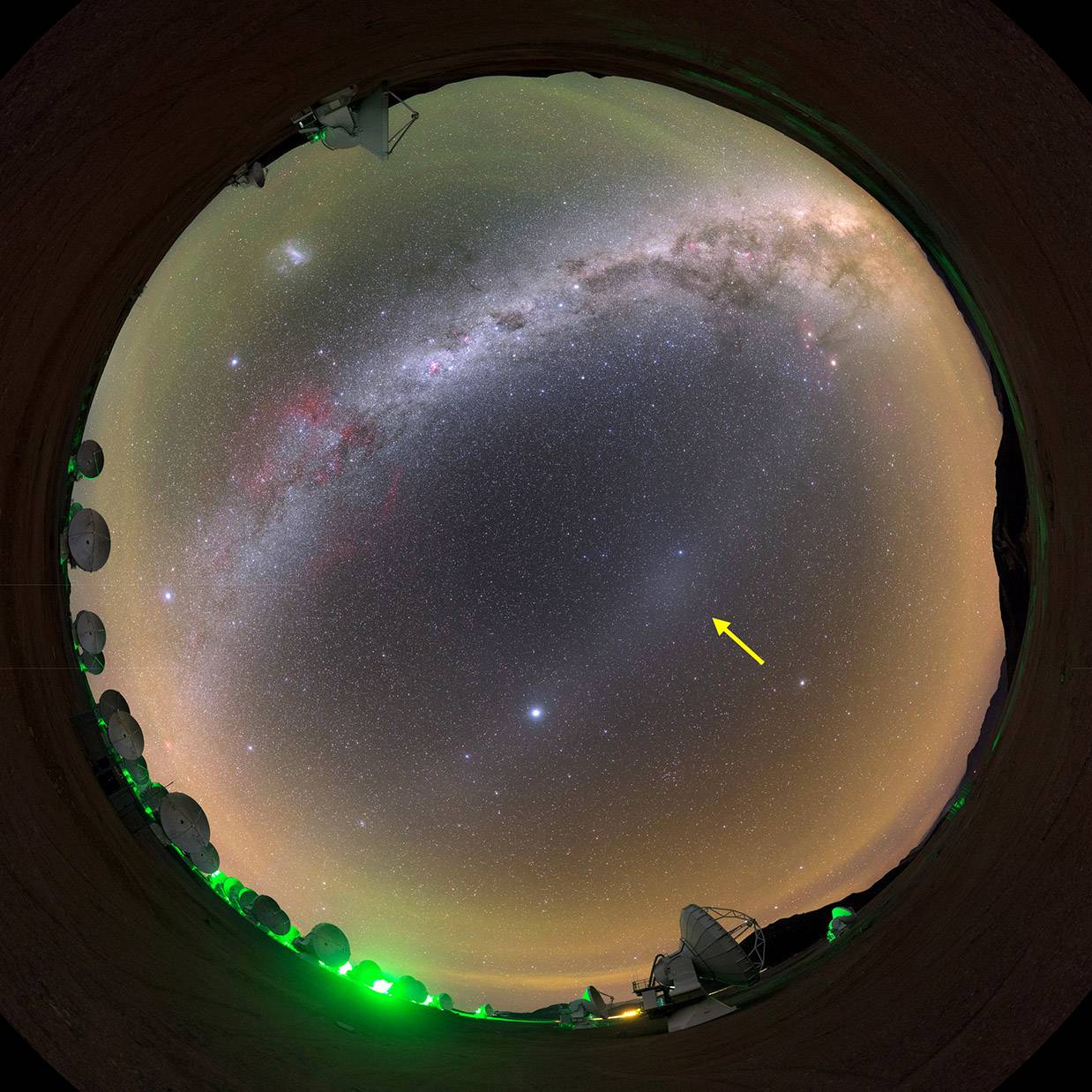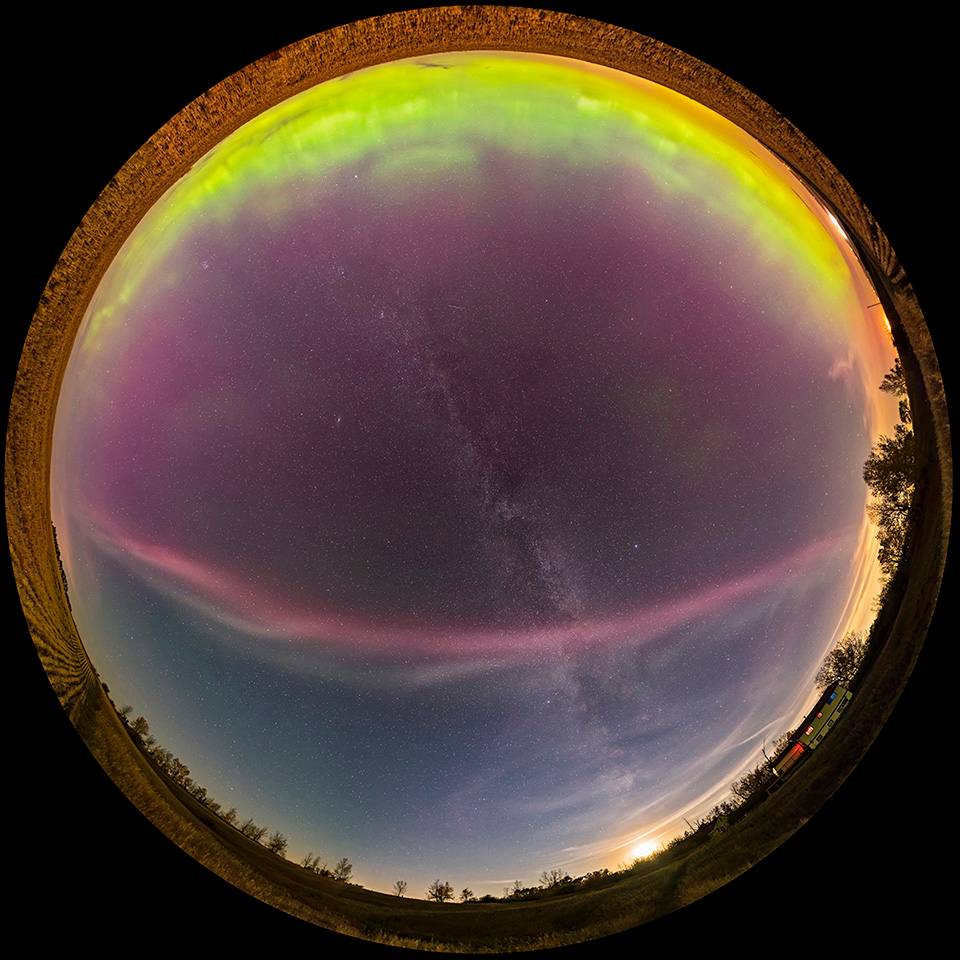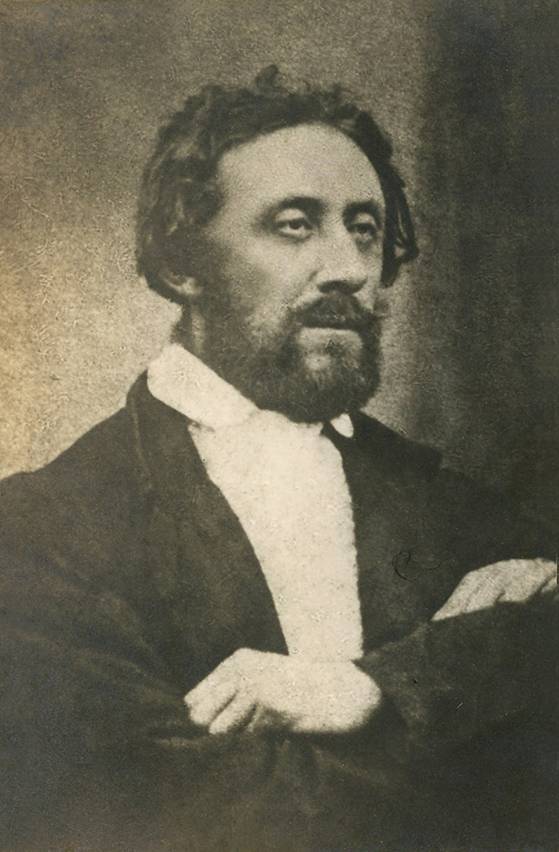'Celestial Sleuth' corrects historical record on gegenschein discovery
Jayme Blaschke | August 17, 2021


The discovery of the gegenschein—a faint nighttime glow that appears as a diffuse brightening at the anti-sun, the point in the sky exactly opposite the sun—has usually been attributed to French Jesuit astronomer Esprit Pezenas in 1730.
Now, Texas State University astronomer, physics professor emeritus and Texas State University System Regents' Professor Donald Olson has applied his distinctive brand of celestial sleuthing to the question and determined that Danish astronomer Theodor Johann Christian Ambders Brorsen was actually the first person to observe and record the elusive gegenschein in 1854, more than a century after the supposed discovery by Pezenas.
Olson publishes his findings in the October 2021 issue of Sky & Telescope magazine, on newsstands now.

Gegenscheinanigans
"I've long been interested in three related night sky phenomena—zodiacal light, which is pyramidal shaped and seen in the evening or morning twilight; the zodiacal band, which can extend across the entire sky and is very difficult to see; and the gegenschein, which is a brightening in the zodiacal band at a point in the sky that is exactly opposite the sun," Olson said. "The gegenschein is one of the most elusive faint glows in astronomy."
Gegenschein, which means "counter-glow" in German, is related to zodiacal light and the zodiacal band – night sky phenomena that all have a common origin in sunlight reflected and scattered from dust in or near the plane of Earth’s orbit around the sun. Observation of the faint gegenschein requires a dark site with clear, transparent skies during the periods of late September-November and February-April, when the anti-sun is relatively far from the Milky Way in the sky and the brighter glow of our home galaxy cannot overwhelm the much fainter gegenschein. The best time of night to view the gegenschein is always near local midnight, when this faint glow appears as an oval patch in the zodiacal constellation then highest in the sky and farthest above the atmospheric absorption that prevails near the horizon.
Pezenas being credited for the discovery can largely be traced to an influential two-volume set on the history of astronomy completed by Swiss astronomer Rudolf Wolf in 1893. Wolf wrote, "In 1730 Pézénas discovered the so-called 'Gegenschein,' the brightest part of which is opposite the sun’s location . . . see the Mémoires of the Paris Academy for 1731."
Still, other astronomers expressed doubt about Pezenas' connection to the gegenschein. As early as 1867 the Italian astronomer Giovanni Schiaparelli suggested that Pezenas had perhaps observed an aurora borealis instead of the gegenschein. In 1925 Swiss astronomer Franz Flury also expressed skepticism, also pointing to an aurora as the phenomenon Pezenas likely observed, although Flury allowed that Pezenas may have observed the gegenschein at the same time as the aurora.
"I first wrote about zodiacal light more than 30 years ago for Sky & Telescope, and that led me to wonder – who was the first to describe the gegenschein?" Olson said. "The consensus was that Pezenas observed it in 1730, but I wanted to read the primary sources to see exactly what he said. Well, imagine my surprise when I read his account. I immediately became skeptical."

What Pezenas saw
While Wolf and several other early authors cite Mémoires of the Paris Academy for 1731 as evidence for Pezenas being credited with the discovery, Olson found an earlier account by Pezenas in the May 1730 issue of a more obscure publication, the Journal de Trévoux. Pezenas' account read, in part:
FROM MARSEILLE I noticed on the 15th of February of this year a great light along the zodiac … It extended obliquely, nearly according to the position of the zodiac, and it formed a kind of belt, 10 to 12 degrees wide … in the northeast, it appeared a bright red which illuminated all the countryside. It passed by the heart of the Lion and by Cancer, where it somewhat covered Jupiter; it grazed the eastern shoulder of Orion, and it passed above this constellation; it also covered the Pleiades, and it appeared to be directed towards the Sun. This light did not prevent us from seeing the smallest stars, even in the northeast where it was denser; it was much as we see them through the tails of comets. It weakened in the northeast at 8 o’clock … Its brilliancy was renewed at 9 o’clock, and the horizon in the northeast appeared until 10 o’clock just as bright, as if the Moon had been present. About half past 10 o’clock it diminished imperceptibly, and I saw almost nothing at 11 o’clock.
Pezenas' written account is clear, precise and detailed, as one would expect from an experienced astronomer. It also raises several red flags that cast serious doubt on what he actually observed that night.
"As Pezenas describes it, there are two major problems: First, he describes it as having a bright red color, but the gegenschein is so faint, it's near the limit of human vision, when colors are difficult or impossible to detect. He shouldn't be perceiving bright colors," Olson said. "Also, he states that it faded out by midnight, whereas the true gegenschein should be most visible near local midnight, when it's highest in the sky."
While Pezenas' written observations are an exceedingly poor description of the gegenschein, they are a vivid description of an aurora. If it were an aurora Pezenas witnessed, Olson reasoned, there should be other contemporary accounts of simultaneous observations. If he could find other accounts, they would be strong evidence that Pezenas never observed the gegenschein.
"I ended up finding dozens and dozens of observations from Feb. 15, 1730. It turns out there was a great auroral event on that night," Olson said. "It was seen throughout Europe and throughout Asia. I found observations from half a dozen places in France, three places in Sweden, locations in the Netherlands, Poland, Russia, Germany, Austria, Spain, China, Japan and many other places."


Who really discovered the gegenschein?
So, if Pezenas was not the first astronomer to observe the gegenschein, who was? Many of the same historical sources that credit Pezenas with discovering the gegenschein hold that German explorer Alexander von Humboldt observed this elusive glow in 1803. Based on entries in his journal from March 1803, Humboldt later recalled seeing a faint counter-glow in the east. In the original German of his account, counter-glow is "Gegenschein," giving the phenomenon its modern name.
There's a large "but" to crediting Humboldt as the discoverer, however. Humboldt described luminous pyramids near both the western horizon and the eastern horizon shortly after sunset, not near midnight when the oval of the true gegenschein is high overhead. Astronomer Robert Roosen, an expert on night sky glows, rejected outright the possibility that Humboldt viewed the true gegenschein, suggesting scholars were focusing more on his early use of the term "Gegenschein" than the German's actual observations.
With both Pezenas and Humboldt eliminated, the next potential candidate is Danish astronomer Theodor Johann Christian Ambders Brorsen. A prolific discoverer of comets, Brorsen published the first clear and unambiguous description of the gegenschein phenomenon in 1854. He studied the zodiacal light and the zodiacal band, noticed the brighter patch near the anti‑sun and carefully measured its position among the stars during March and April 1854.
Brorsen cited Humbolt in his article, “Concerning a New Phenomenon of the Zodiacal Light,” and applied the term Gegenschein to his observations:
… after 11 p.m. the Gegenschein appeared, which consisted of a brighter elongated round patch … the middle of it coincided almost exactly with the point opposite the Sun … a round glow, almost exactly opposite the Sun’s location.
Brorsen continued his observations of the gegenschein into 1855, taking detailed notes that leave no doubt he observed the faint phenomenon repeatedly over the course of a year. Pezenas and Humboldt observed interesting astronomical sights, to be sure, but it was Brorsen who first viewed and recorded the elusive gegenschein.
Share this article
For more information, contact University Communications:Jayme Blaschke, 512-245-2555 Sandy Pantlik, 512-245-2922 |